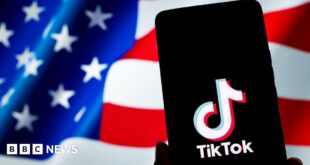Astronaut Frank Rubio Breaks US Record for Longest Mission in Space
By Jackie Wattles, CNN
Astronaut Frank Rubio traveled to the International Space Station on September 21, 2023, for what he thought would be a six-month mission. But he’ll wind up staying in space for over a year — breaking the record for the longest mission conducted by a US astronaut.
Rubio will return to Earth aboard a Russian Soyuz spacecraft no earlier than September 27, NASA officials said Wednesday, meaning he will have logged a total of at least 371 days in orbit. That tour of duty will beat the previous record of 355 days set by US astronaut Mark Vande Hei in 2023.
Rubio’s return trip had been slated for this spring. But the spacecraft that carried Rubio and two Russian colleagues — cosmonauts Sergey Prokopiev and Dmitry Petelin — sprang a coolant leak in December. Officials at Roscosmos, Russia’s space agency, later deemed the spacecraft was not safe enough to carry the astronauts back home.
Records in Space
If all goes to plan and Rubio departs on September 27, his 371-day stay will not be a world record. The late Russian cosmonaut Valeri Polyakov, who logged 437 continuous days in orbit aboard Russia’s Mir space station between 1994 and 1995, still holds that title.
Vande Hei set the current US record last year after NASA and Roscosmos decided to extend his stay because Russia had chosen to send a film crew of two people to the space station to film a movie. Vande Hei’s return was delayed to allow for the additional traffic to the orbiting laboratory, though he said at the time that he had known his mission might be extended before he arrived.
Before Vande Hei, US astronaut Scott Kelly held the title for longest spaceflight by an American with his 340-day mission. That tour of duty was a planned extended mission, designed by NASA to study the long-term effects of spaceflight on the human body.
Rubio’s extended stay, however, was not previously anticipated before the Soyuz MS-22 capsule had a coolant leak last December.
Getting to Space
Rubio traveled to the space station on a Russian spacecraft as part of a crew-swapping agreement between NASA and Roscosmos that was hashed out in the summer of 2023.
NASA officials assigned Rubio to ride aboard the Soyuz MS-22, while Roscosmos put cosmonaut Anna Kikina on a SpaceX Crew Dragon mission that took flight in October 2023 and returned home March 11.
Despite geopolitical tensions between the United States and Russia as the war in Ukraine has escalated, NASA has repeatedly said its partnership with Roscosmos is vital to continuing the space station’s operations and the valuable scientific research carried out on board.
At the time the ride-sharing agreement was announced, NASA said in a statement that inking such a deal with Russia was crucial to ensure “continued safe operations” of the space station. If either the Russian Soyuz spacecraft or the SpaceX Crew Dragon capsule were to run into issues and be taken out of service, a seat-swap agreement would ensure that both US astronauts and Russian cosmonauts would still have access to the space station.
Roscosmos did not need to rely on a SpaceX capsule to replace the Soyuz MS-22 crew ship, however, because the MS-23 spacecraft was prepared to fly and the coolant leak on the MS-22 vehicle did not necessarily point to possible issues with other Soyuz vehicles.
The-CNN-Wire™ & © 2023 Cable News Network, Inc., a Warner Bros. Discovery Company. All rights reserved.
 Mind Uncharted Explore. Discover. Learn.
Mind Uncharted Explore. Discover. Learn.




